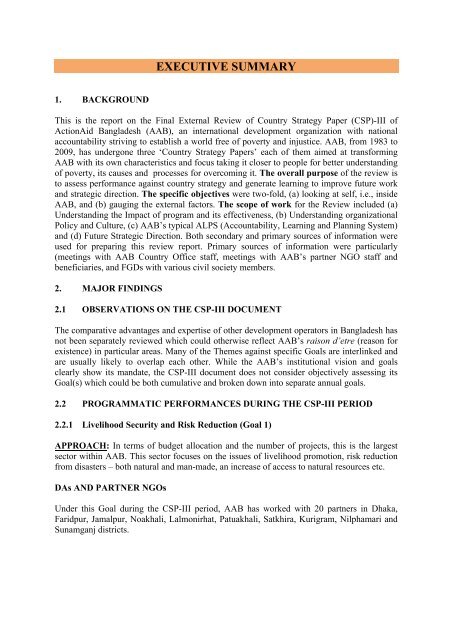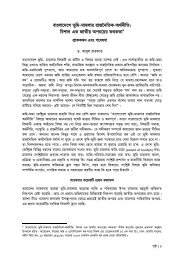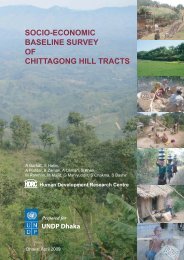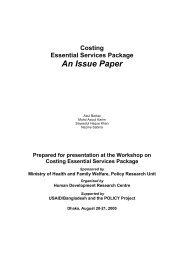External Review of ActionAid Bangladesh's Country Strategy Paper-III
External Review of ActionAid Bangladesh's Country Strategy Paper-III
External Review of ActionAid Bangladesh's Country Strategy Paper-III
Create successful ePaper yourself
Turn your PDF publications into a flip-book with our unique Google optimized e-Paper software.
1. BACKGROUND<br />
EXECUTIVE SUMMARY<br />
This is the report on the Final <strong>External</strong> <strong>Review</strong> <strong>of</strong> <strong>Country</strong> <strong>Strategy</strong> <strong>Paper</strong> (CSP)-<strong>III</strong> <strong>of</strong><br />
<strong>ActionAid</strong> Bangladesh (AAB), an international development organization with national<br />
accountability striving to establish a world free <strong>of</strong> poverty and injustice. AAB, from 1983 to<br />
2009, has undergone three ‘<strong>Country</strong> <strong>Strategy</strong> <strong>Paper</strong>s’ each <strong>of</strong> them aimed at transforming<br />
AAB with its own characteristics and focus taking it closer to people for better understanding<br />
<strong>of</strong> poverty, its causes and processes for overcoming it. The overall purpose <strong>of</strong> the review is<br />
to assess performance against country strategy and generate learning to improve future work<br />
and strategic direction. The specific objectives were two-fold, (a) looking at self, i.e., inside<br />
AAB, and (b) gauging the external factors. The scope <strong>of</strong> work for the <strong>Review</strong> included (a)<br />
Understanding the Impact <strong>of</strong> program and its effectiveness, (b) Understanding organizational<br />
Policy and Culture, (c) AAB’s typical ALPS (Accountability, Learning and Planning System)<br />
and (d) Future Strategic Direction. Both secondary and primary sources <strong>of</strong> information were<br />
used for preparing this review report. Primary sources <strong>of</strong> information were particularly<br />
(meetings with AAB <strong>Country</strong> Office staff, meetings with AAB’s partner NGO staff and<br />
beneficiaries, and FGDs with various civil society members.<br />
2. MAJOR FINDINGS<br />
2.1 OBSERVATIONS ON THE CSP-<strong>III</strong> DOCUMENT<br />
The comparative advantages and expertise <strong>of</strong> other development operators in Bangladesh has<br />
not been separately reviewed which could otherwise reflect AAB’s raison d’etre (reason for<br />
existence) in particular areas. Many <strong>of</strong> the Themes against specific Goals are interlinked and<br />
are usually likely to overlap each other. While the AAB’s institutional vision and goals<br />
clearly show its mandate, the CSP-<strong>III</strong> document does not consider objectively assessing its<br />
Goal(s) which could be both cumulative and broken down into separate annual goals.<br />
2.2 PROGRAMMATIC PERFORMANCES DURING THE CSP-<strong>III</strong> PERIOD<br />
2.2.1 Livelihood Security and Risk Reduction (Goal 1)<br />
APPROACH: In terms <strong>of</strong> budget allocation and the number <strong>of</strong> projects, this is the largest<br />
sector within AAB. This sector focuses on the issues <strong>of</strong> livelihood promotion, risk reduction<br />
from disasters – both natural and man-made, an increase <strong>of</strong> access to natural resources etc.<br />
DAs AND PARTNER NGOs<br />
Under this Goal during the CSP-<strong>III</strong> period, AAB has worked with 20 partners in Dhaka,<br />
Faridpur, Jamalpur, Noakhali, Lalmonirhat, Patuakhali, Satkhira, Kurigram, Nilphamari and<br />
Sunamganj districts.






